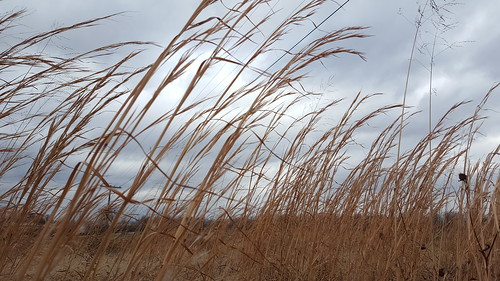Controlling broomsedge on pastures
By Sarah Cato
U of A System Division of Agriculture
March 12, 2019
Fast facts:
- Broomsedge is an invasive weed that targets ill-managed pastures
- Prevention is key: Control is difficult once broomsedge is established
(335 words)
(Newsrooms: With art available at https://flic.kr/s/aHskPBhMvc)
(Download this story in MS Word format here.)
FAYETTEVILLE, Ark. – Those pesky brown broomsedge stems — the things that crop up in abandoned and ill-managed pastures — can cause years of strife for any farmer. But there are many preventative measures that growers can take.
“Broomsedge is a native warm-season perennial grass that occupies the niches left by diminished forage species,” said Dirk Philipp, assistant professor of forages for the University of Arkansas System Division of Agriculture and the Dale Bumpers College of Agricultural, Food and Life Sciences.
“Most often broomsedge appears in mountainous areas and formerly forested fields, but pastures that have undergone the stress of drought or overgrazing also make for an ideal environment,” he said.
Allelopathic chemicals in broomsedge prevent other plants from germinating around them, making this an extremely competitive plant.
Prevention
Because broomsedge can be difficult to control once established, prevention is key. Preventative options include:
- Keep pH and Phosphorus levels in check. This means farmers should monitor soil fertility every year or two. The pH levels take some time to correct, so plan accordingly.
- Maintain appropriate pasture management. Keeping pastures clear of common weeds goes a long way to avoid major weed intrusion. Proper grazing methods should enable the farmer to increase or decrease grazing pressure in certain areas, and to help avoid overgrazing.
- Long-term management plans should be in place as well. Pasture species composition is dynamic, and forages likely have to be over-seeded after a few years in certain areas. Landscape position is a driver for available water, and thus plant composition.
Control
Once broomsedge appears in pastures, it will be there for a while. Control options include:
- Correcting any nutrient deficiencies in respective pastures. This will increase the vigor of the base forage.
- Grazing pastures properly. Cattle will eat broomsedge for a short period of time in spring.
- Patience. It may take several years before broomsedge will disappear.
There are no good herbicide options, other than glyphosate, which will also kill or damage the surrounding forage.
For more information on weed control in agriculture, visit www.uaex.uada.edu.
About the Division of Agriculture
The University of Arkansas System Division of Agriculture’s mission is to strengthen agriculture, communities, and families by connecting trusted research to the adoption of best practices. Through the Agricultural Experiment Station and the Cooperative Extension Service, the Division of Agriculture conducts research and extension work within the nation’s historic land grant education system.
The Division of Agriculture is one of 20 entities within the University of Arkansas System. It has offices in all 75 counties in Arkansas and faculty on five system campuses.
Pursuant to 7 CFR § 15.3, the University of Arkansas System Division of Agriculture offers all its Extension and Research programs and services (including employment) without regard to race, color, sex, national origin, religion, age, disability, marital or veteran status, genetic information, sexual preference, pregnancy or any other legally protected status, and is an equal opportunity institution.
# # #
Media Contact: Mary Hightower
Dir. of Communication Services
U of A Division of Agriculture
Cooperative Extension Service
(501) 671-2126
mhightower@uada.edu
